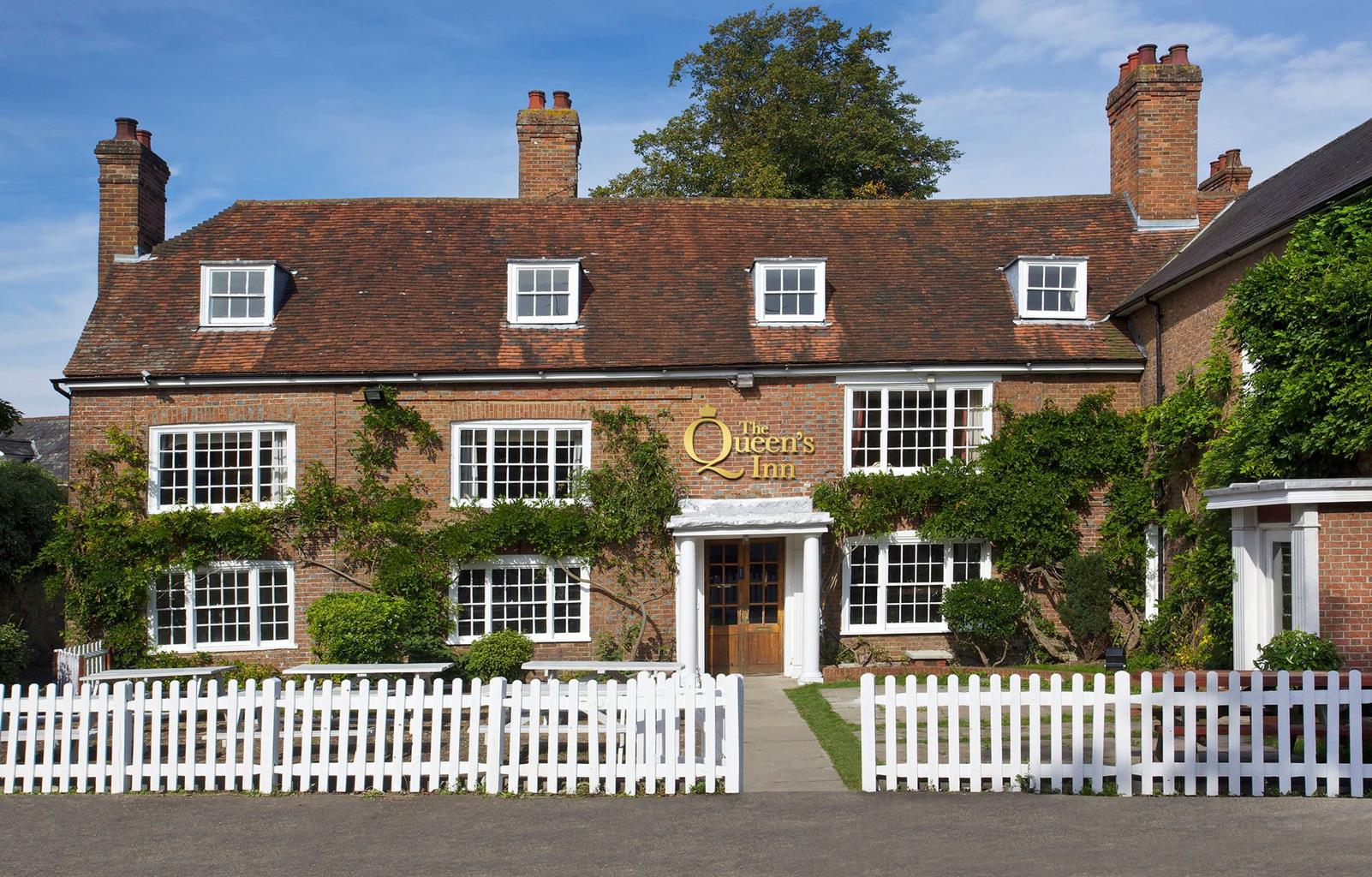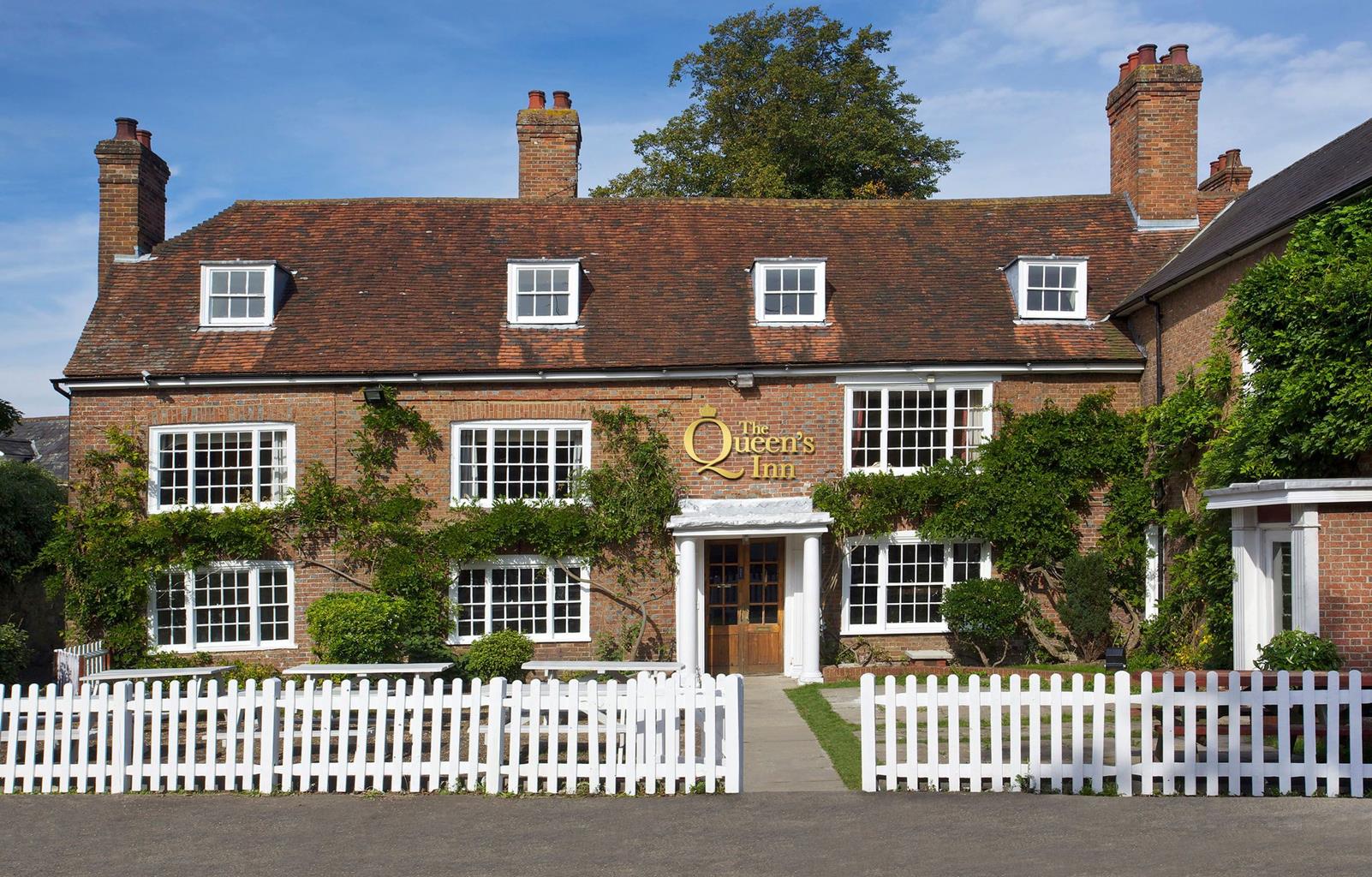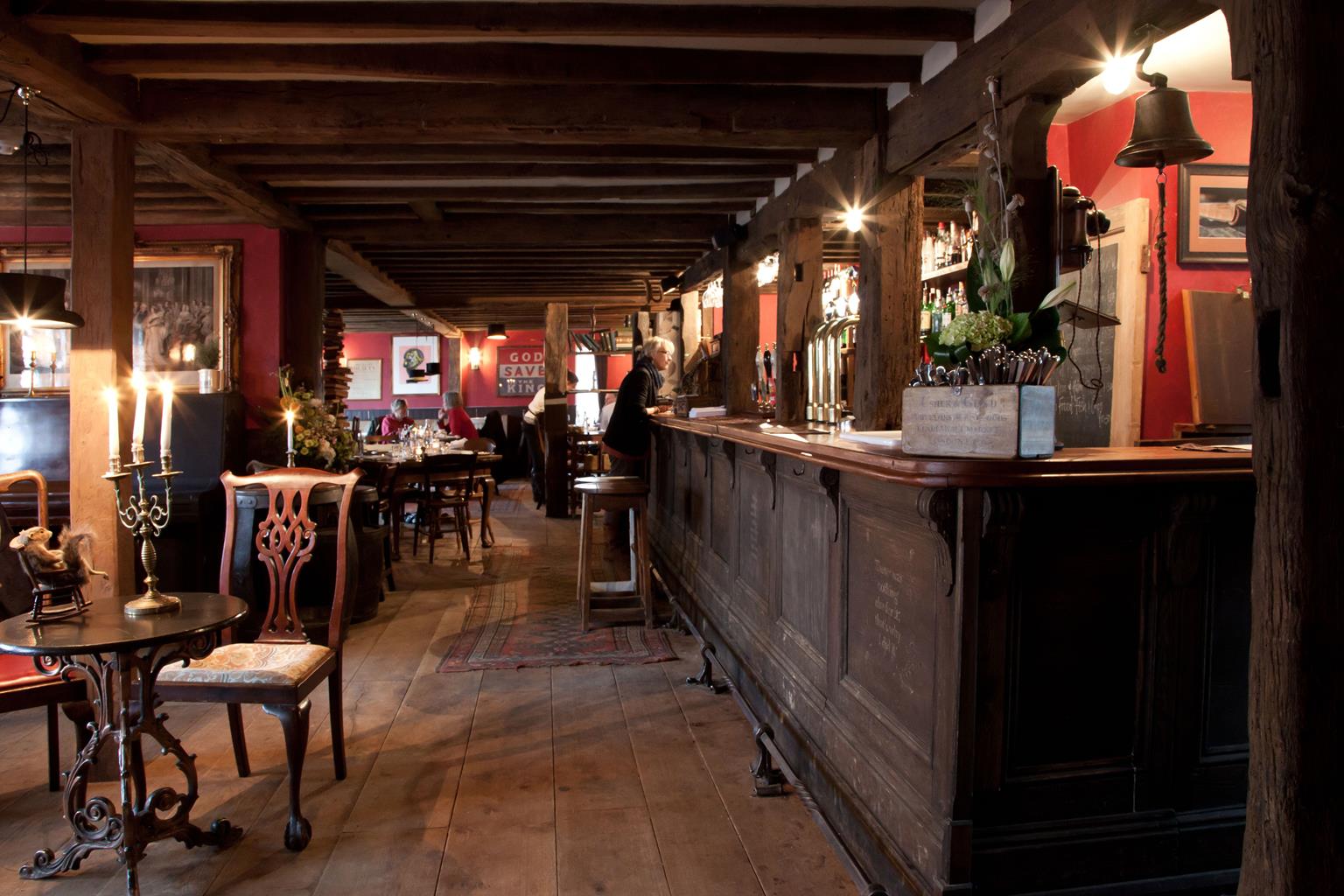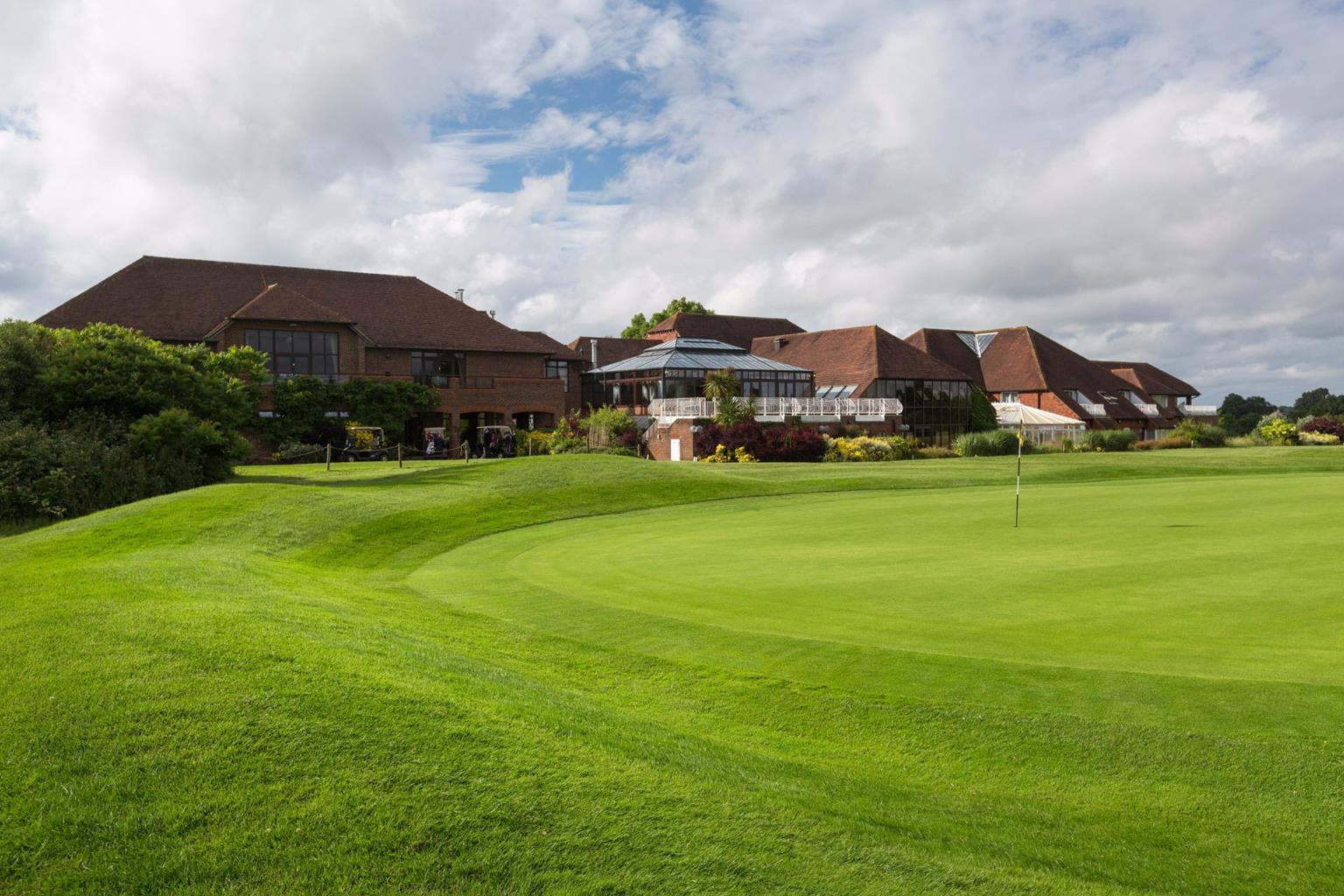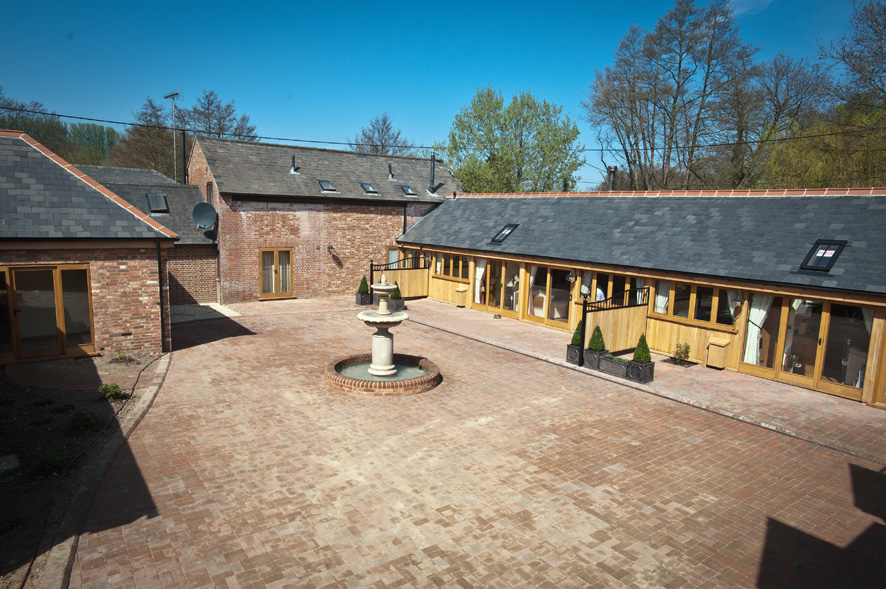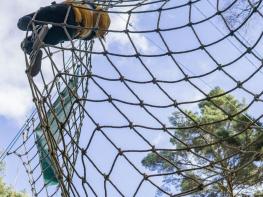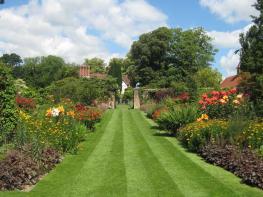Carefully brought back to life after years of decline, The Queen's Inn offers individually…
Around Hawkhurst to the Sussex border

5.5 miles (8.8kms)
About the walk
The name Hawkhurst once struck fear into the hearts of Kentish people, for it used to be the headquarters of the vicious Hawkhurst Gang, smugglers who terrorised the area in the mid-18th century. Prior to the 13th century, smuggling didn't exist because there were no customs duties. Around 1300, Edward I introduced a customs levy on wool, which was England's primary export and in great demand. Although the rates were low at first, they soon increased as the Crown needed money to fight the Hundred Years War with France (1337–1453). The woollen industry continued to grow in importance, particularly when Flemish weavers, encouraged by Edward III, came to Kent and settled in the Weald, bringing with them their skills in cloth making.
Early in the 17th century, the export of wool was made illegal, and smuggling increased. Although the number of customs officers gradually increased, smuggling became more profitable and port officials could often be bribed. When the illegal export of wool became punishable by death, the smugglers began to arm themselves.
At first smugglers were seen as Robin Hood figures, helping people to acquire items at prices they could afford. As well as wool, they would also smuggle goods such as spirits, silks, tea and tobacco. However, as gangs became more organised they also became more sinister and began to intimidate local people. The most ruthless of all was the Hawkhurst Gang who controlled all the smuggling on the south coast from 1735 to 1749. The gang was so powerful that they could assemble 500 armed and mounted men within an hour. They operated from The Oak and Ivy pub in Hawkhurst, where, apparently, a tunnel once ran from the pub to Tubs Lane near Cranbrook (so called because of the tubs of brandy that used to be seen floating in the water). In 1822, a cave the gang once used as a storehouse was discovered in Soper's Lane. It wasn't until 1747, when the people of Goudhurst formed a militia and killed several smugglers, that anyone showed any resistance. When the gang viciously tortured and murdered two informers two years later, several smugglers were captured and hung and the Hawkhurst Gang gradually lost its influence.
Walk directions
Leave the car park, turn left along the main road and take the arrowed path right beside Pear Tree House. Cross a stile by a gate and bear right, following the hedge to a stile. Walk through woodland and cross rough pasture to a stile and road, opposite The Black Pig pub.
Turn right, then left along Talbot Road and soon pass the village green (The Moor). Take the footpath right down Hensill Lane, keeping left by Lodge Cottage into woodland. Just before farm buildings, bear right into a field and keep left to a stile. Turn right, then left before a gate and follow the field-edge to a stile in the corner. Go over the stile ahead, walk through the edge of a copse and keep left on entering an orchard.
Where the path splits, go right along the orchard edge to a stile, then cut across the field to another stile. Turn right down the orchard edge to cross a plank bridge in trees and continue ahead to a road. Cross the stile opposite and head uphill to the A268.
Climb the stile opposite, keep right beside the hospital car park to a stile, then head across a field and walk through woodland to a stile. Turn left along the field-edge, go back into the woods, following the track left which soon swings right over a stream and soon exit the wood via a gate. Bear left across a field, go through a copse and follow the clear field path to a plank bridge and gate in trees. Turn left along the field-edge.
Go through a gate and follow the track right for 0.25 miles (400m) to Siseley Farm.
Turn right along the farm drive and take the footpath left opposite Soper's Farmhouse. Keep to the right-hand field-edge, climb a stile in the corner and keep ahead beside trees to a stile. Drop down through the edge of woodland, cross a bridge and continue ahead through a gate. Follow the track ahead through Trewint Farm to the road. Turn left, then immediately right, bearing right at the end to reach The Great House pub.
Cross the busy A229 here and walk along Heartenoak Road until you come to a byway on the right. Follow this past Ockley Mill Farm and up into the outskirts of Hawkhurst. Turn left on reaching the road, then turn right at the T-junction and walk to the crossroads, where you turn left to return to the car park.
Additional information
Woodland tracks and field margins, many stiles
A mix of open fields, dense woodland and orchards
Keep on lead across farmland; some stiles could be difficult
OS Explorer 136 The Weald, Royal Tunbridge Wells
Free car park on A268 in Hawkhurst by the primary school
None on route
WALKING IN SAFETY
Read our tips to look after yourself and the environment when following this walk.
Find out more
Also in the area
About the area
Discover Kent
The White Cliffs of Dover are an English icon – the epitome of our island heritage and sense of nationhood. They also mark the point where the Kent Downs AONB, that great arc of chalk downland stretching from the Surrey Hills and sometimes known as ‘the Garden of England’, finally reaches the sea. This is a well-ordered and settled landscape, where chalk and greensand escarpments look down into the wooded Weald to the south.
Many historic parklands, including Knole Park and Sir Winston Churchill’s red-brick former home at Chartwell, are also worth visiting. Attractive settlements such as Charing, site of Archbishop Cranmer’s Tudor palace, and Chilham, with its magnificent half-timbered buildings and 17th-century castle built on a Norman site, can be found on the Pilgrim’s Way, the traditional route for Canterbury-bound pilgrims in the Middle Ages.
In the nature reserves, such as the traditionally coppiced woodlands of Denge Wood and Earley Wood, and the ancient fine chalk woodland of Yockletts Bank high on the North Downs near Ashford, it is still possible to experience the atmosphere of wilderness that must have been felt by the earliest travellers along this ancient ridgeway.
Nearby stays
Restaurants and Pubs
Nearby experiences
Recommended things to do
Why choose Rated Trips?
Your trusted guide to rated places across the UK
The best coverage
Discover more than 15,000 professionally rated places to stay, eat and visit from across the UK and Ireland.
Quality assured
Choose a place to stay safe in the knowledge that it has been expertly assessed by trained assessors.
Plan your next trip
Search by location or the type of place you're visiting to find your next ideal holiday experience.
Travel inspiration
Read our articles, city guides and recommended things to do for inspiration. We're here to help you explore the UK.

